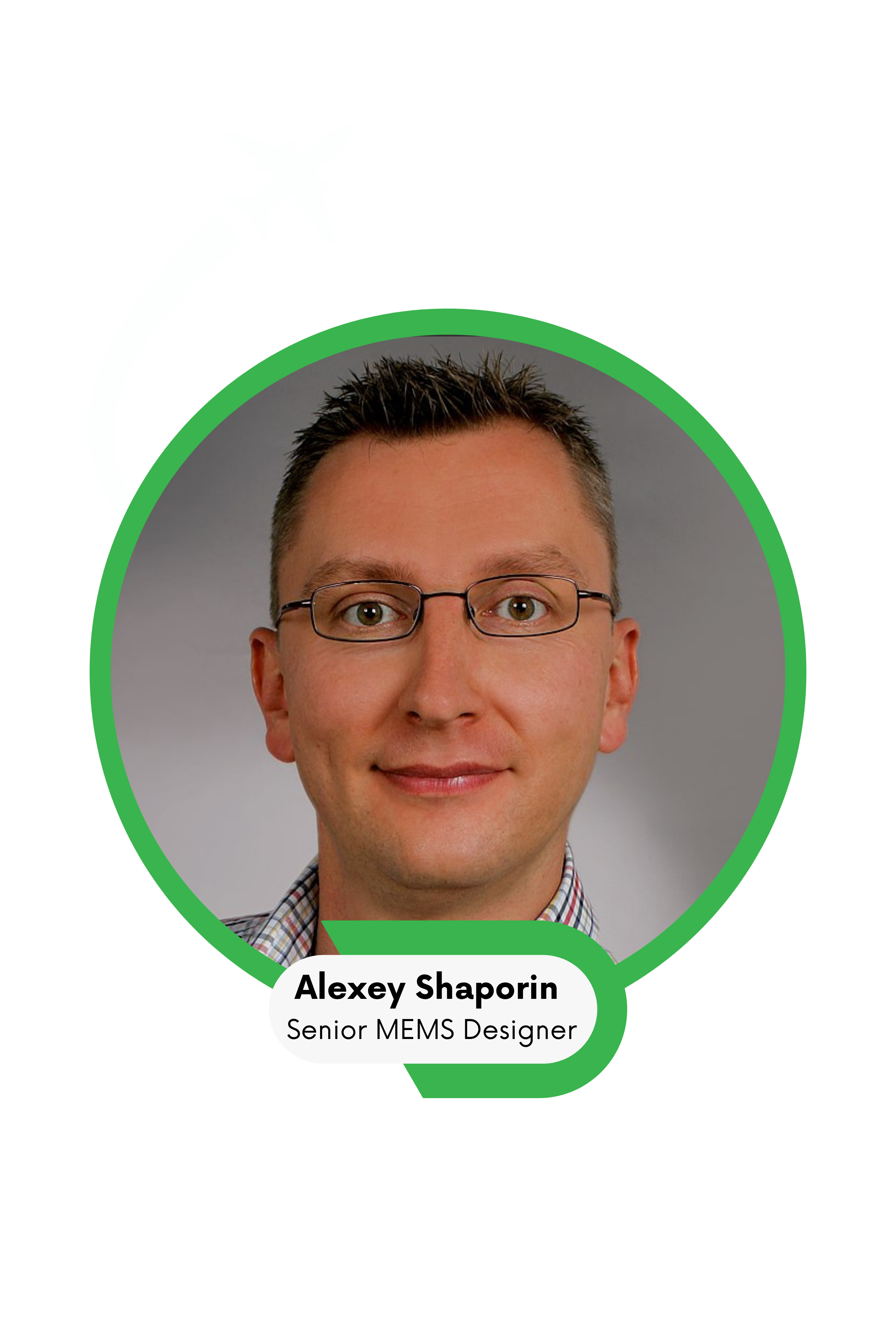Personal Information
- Name: Alexey Shaporin
- Position/Title: Senior MEMS Designer
- Department: Multi Device Integration
Professional Background
Briefly describe your professional background and area of expertise:
I have over 30 years' experience in MEMS/NEMS design, simulation and characterisation. After holding academic positions at Chemnitz University of Technology, I earned a PhD in 2009 for my work on wafer-level microsystem characterisation. I then worked as a Research Engineer at TU Chemnitz (2009–2015), focusing on microsystem design and simulation. Since 2015, I have been working at Fraunhofer ENAS in Chemnitz, Germany, designing MEMS/MOEMS/SHM systems for clients in the industry and public sectors. My areas of expertise include FEM-based multiphysics simulations and MEMS layouting and design for various fabrication technologies.
What inspired you to pursue a career in this related field, e.g., aviation, carbon-free emissions etc?:
My passion for structural health monitoring (SHM) in aviation was sparked by my 30 years of experience designing MEMS/NEMS at Fraunhofer ENAS. The challenge of creating reliable, lightweight SHM systems for sustainable aircraft, coupled with the aviation industry’s demand for safety and environmental solutions, motivated me to apply my MEMS-based SHM skills. Through research projects and industry collaborations, I am working to develop safe, efficient and environmentally friendly aviation technologies.
Role in H2ELIOS
What is your role in the H2ELIOS project?:
In the H2ELIOS project, I am responsible for the SHM MEMS design, as well as coordinating the project between our many partners and internal subcontractors.
Can you describe your main responsibilities and tasks?:
My main responsibility lies in WP4, which focuses on the system architecture of the MEMS-based SHM system.
How does your work contribute to the overall goals of the H2ELIOS project?:
The contribution of our team to the overall goals of the H2ELIOS project lies in the development of a system that will monitor the LH2 tank from many different angles. These black boxes will network together to ensure the reliable operation of the entire system and log all changes throughout the tank's lifespan. This vital information will also be an important contribution to the tank's digital twin model.
These black boxes will network together to ensure the reliable operation of the entire system and log all changes throughout the tank's lifespan. This vital information will also be an important contribution to the tank's digital twin model.
Project Insights
What do you find most exciting about working on the H2ELIOS project?:
The most exciting thing about working on the H2ELIOS project is the opportunity to be part of an international team from various companies and scientific institutes that are coming together to create something completely new: a liquid hydrogen-fuelled plane that has never flown under this sky before.
What has been the most challenging aspect of your work on this project?:
To stay on the edge of the wave. To fulfil tasks on time. To react to many changing conditions. And to react to many changing rules of play.
Can you share a significant milestone or achievement your team has reached so far?:
We are happy to transform our scientific and lab-based MEMS sensors, which we design and fabricate almost from ab initio, into industrial prototypes.
The most exciting thing about working on the H2ELIOS project is the opportunity to be part of an international team… creating something completely new: a liquid hydrogen-fuelled plane that has never flown under this sky before.
Personal Experience
What have you learned during your time working on H2ELIOS?:
Working on the H2ELIOS project was a valuable learning experience. I learned how effective communication and a well-organized plan between partners are fundamental to tackling difficult tasks. The project also allowed me to refine my planning, cooperation and collaboration skills. I learned how crucial it is for the entire team to have a clear understanding of task definition and common goals.
How has this project influenced your professional development?:
This project sufficiently influence may professional development – first time we have a task, that is very challenging, may be unsolvable at the current stage of our technical development level.
Fun Facts
What do you enjoy doing in your free time?:
I have a large garden – a 'dacha' in East German slang – where one can relax after a hard day's work. The best thing is that it is not far from home or work – just about five minutes away, and I can escape city life and enjoy the rural environment.
Share a fun fact about yourself that your colleagues might not know:
Another passion of mine that my colleagues might not know about is photography, particularly astrophotography. So, on business trips, I sometimes use the last night before flying back home to take photos of the night southern sky with the Milky Way somewhere outside the light pollution of the suburbs of a new city. This is always a challenging task because the location is unfamiliar and sometimes associated with interesting experiences.
It will be even greater to see the LH2 plane in flight, which is something I'm really looking forward to. I'll be able to tell my daughter, ‘Look, I was part of it.
Closing Thoughts
Is there anything else you would like to share about your experience with the H2ELIOS project?:
It's great to see a team of experienced professionals sharing their knowledge in order to achieve new goals in the development of sustainable transportation systems. It will be even greater to see the LH2 plane in flight, which is something I'm really looking forward to. I'll be able to tell my daughter, 'Look, I was part of it.'
